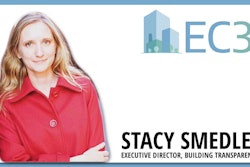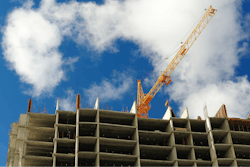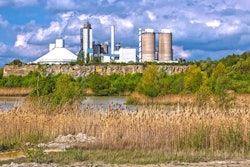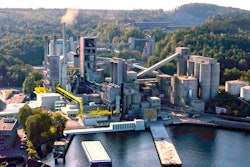![Adobe Stock 186914228 5fb3f33b19f40[1]](https://img.forconstructionpros.com/files/base/acbm/fcp/image/2021/08/AdobeStock_186914228.5fb3f33b19f40_1_.611587037cce2.png?auto=format%2Ccompress&q=70&rect=0%2C204%2C1920%2C1080&w=400)
On August 8, 2021, Mori Rothman, author for PBS News Hour, published a story that looked to answer one of the biggest questions in the concrete industry:
"Can concrete be made greener?"
Yes. But, it's a long hard road ahead.
Rothman interviews Jamie Gentoso, the Global Head of Solutions and Products for LafargeHolcim. They met at the Whitehall Cement Plant - a location over 122 years old. She points out short term goals and targets for 2030. She mentions three concepts in the work done in reducing carbon dioxide emissions in the manufacturing of cement. 1) Process emissions by utilizing limestone, 2) combustion emissions by utilizing alternative fuels, and 3) by carbon capture technology.
It's there where Gentoso brings attention to a cement plant in Florence, Colo. - the first U.S. facility to use carbon-capture technology on a commercial scale. According to an October 2020 AP news story by Judith Kohler, LafargeHolcim received a "$1.5 million grant from the U.S. Department of Energy to research and develop a system to capture and sequester the plant’s carbon dioxide emissions." Gentoso explains that LarfargeHolcim chose Colorado as the first location due to its proximity to oil production (producers inject CO2 into the ground increasing pressure and boosting production).
The location also provides storage options as there the potential to capture CO2 from cement plants can accumulate to a significant amount. Kohler writes, "carbon-capture technology might be able to prevent the release of more than 700,000 tons of carbon a year from the plant."
LafargeHolcim, says Rothman, is also working to change their cement formula that reduces CO2 emissions: Solidia. Back in 2013, "Lafarge signed a partnership agreement with the US start-up Solidia Technologies. The technology allows lower CO2 emissions in the cement production process, and involves the capture of CO2 in precast concrete manufacturing. Overall, CO2 emissions could be reduced by up to 70%." (ForConstructionPros.com/11188351) Solida is a precast concrete producer.
According to Devin Patten, Director of Technology Deployment at Solidia, the cement they manufacture requires a lower temperature which, in turn, requires less energy in the kiln which could then require less limestone. Patten then states that this accounts for a 30% emission reduction which could then be put "back into the cement during the curing process, which hardens the concrete." His next plans in development are to apply these lower-carbon concrete concepts into the ready-mix arena and then working on its adoption into the industry.
It's the beginning of something new and while it has been slow to break through, Patten is still optimistic.
Rothman also speaks with New York Assemblyman Robert Carroll on a bill introduced for the state providing guidelines on low-carbon concrete. The bill sets up incentives for bids which include low-carbon concrete.
Watch and read the full PBS story at Can concrete, a major CO2 emitter, be made greener? | PBS NewsHour Weekend.



















